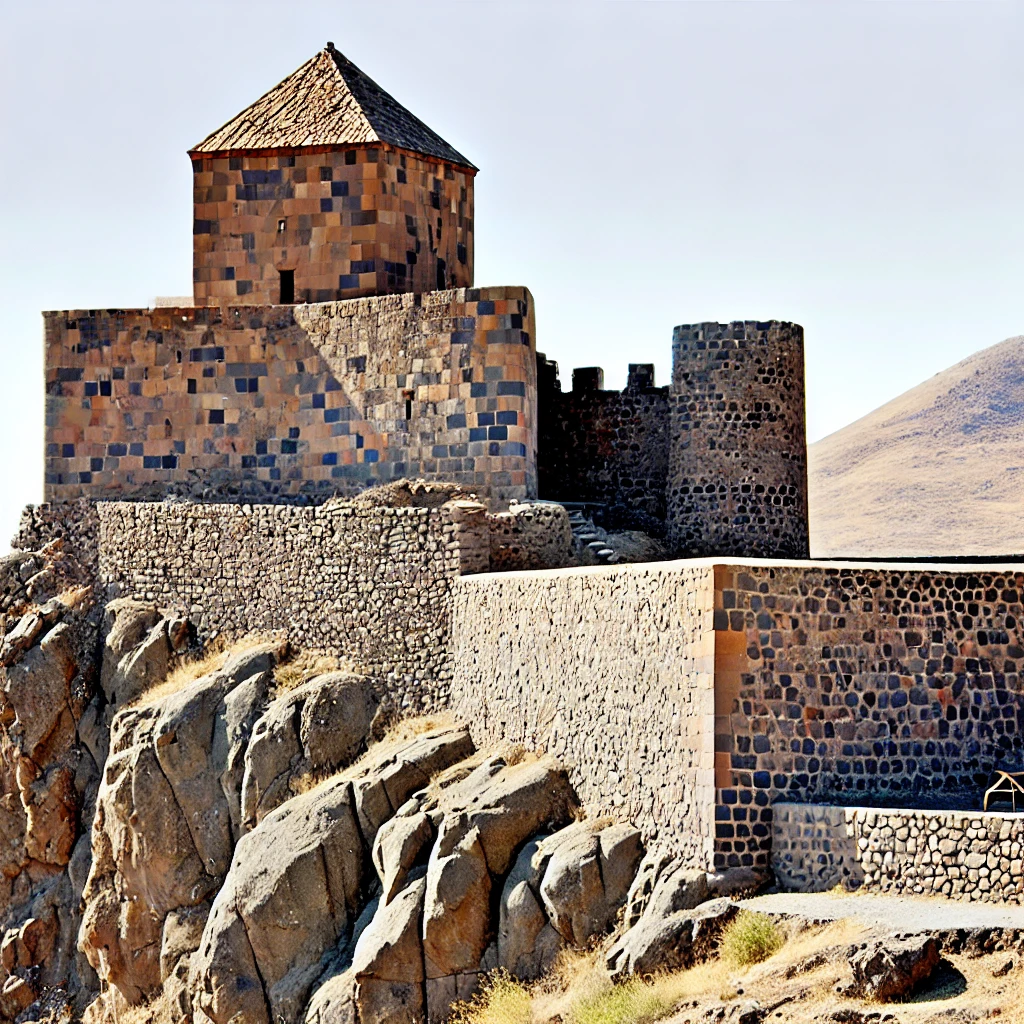Fortresses and Castles of Historic Armenia: Guardians of a Rich Heritage
Armenia, often referred to as an open-air museum, boasts an impressive array of fortresses and castles that stand as testaments to its rich and turbulent history. These architectural marvels not only provided protection but also served as centers of administration, culture, and social life. This article explores some of the most significant fortresses and castles in Historic Armenia, delving into their historical context and architectural significance.
The Historical Context of Armenian Fortresses and Castles
Armenia’s strategic location at the crossroads of Europe and Asia made it a target for numerous invasions throughout history. As a result, the Armenians built a network of fortresses and castles to defend their homeland from foreign invaders such as the Romans, Persians, Byzantines, Arabs, Seljuks, Mongols, and Ottomans. These fortifications played a crucial role in preserving Armenian sovereignty and cultural identity.
Notable Fortresses and Castles of Historic Armenia
Amberd Fortress
Amberd, which means “fortress in the clouds” in Armenian, is one of the most iconic fortresses in Armenia. Located on the slopes of Mount Aragats, this fortress dates back to the 7th century and was expanded in the 11th century by the Pahlavuni princes. Amberd served as a military stronghold and a royal residence, providing stunning views of the surrounding landscapes. The fortress complex includes a church, a bathhouse, and defensive walls.
Amberd was a key defensive site during the Bagratuni dynasty and played a pivotal role in resisting Arab invasions. It later became a symbol of Armenian resilience during the Mongol invasions.
Erebuni Fortress
Erebuni Fortress, also known as Arin Berd, is an ancient Urartian fortress founded in 782 BC by King Argishti I. Located on a hilltop in present-day Yerevan, the capital of Armenia, Erebuni is considered the birthplace of the city. The fortress complex includes temples, palaces, and administrative buildings, showcasing the advanced architectural and engineering skills of the Urartians.
Erebuni was a crucial administrative and military center of the Urartian Kingdom, playing a significant role in the region’s political and economic life.
Smbataberd Fortress
Smbataberd, located in the Vayots Dzor Province, is another remarkable example of Armenian fortification. Named after Prince Smbat, this fortress dates back to the 10th century and was strategically built on a hilltop, offering a commanding view of the surrounding valleys. Smbataberd was known for its formidable defensive structures, including thick walls and a well-designed system of water supply.
Smbataberd played a vital role during the medieval period, particularly during the Seljuk invasions. It was a symbol of Armenian resistance and strategic military planning.
Tavush Fortress
Tavush Fortress, also known as Tovuz or Berdakar, is located in the Tavush Province of northeastern Armenia. This fortress dates back to the 10th century and was an important defensive site against invaders from the north. The fortress complex includes well-preserved walls, towers, and residential quarters, reflecting the architectural ingenuity of medieval Armenian builders.
Tavush Fortress was crucial in defending the northern borders of Armenia and served as a base for military operations against invading forces.
Lori Fortress
Lori Fortress, situated in the Lori Province, is a medieval fortress that dates back to the 11th century. Built by King David Anhoghin, the fortress was a major military and administrative center during the Kingdom of Lori. The fortress complex includes a palace, a church, residential buildings, and defensive walls.
Lori Fortress was a key stronghold during the Bagratuni and Zakarian dynasties, playing a significant role in the defense and administration of northern Armenia.
Architectural Marvels and Innovations
Armenian fortresses and castles are renowned for their architectural ingenuity and innovative construction techniques. These fortifications were often built on elevated terrains such as hills, mountains, and plateaus, providing natural defense advantages. The use of thick stone walls, strategically placed towers, and complex gate systems were common features designed to withstand prolonged sieges.
One notable architectural innovation is the use of underground tunnels and water supply systems. These features ensured that the fortresses could withstand sieges by providing a continuous supply of water and allowing for secret movement of troops and supplies.
Cultural and Social Centers
Beyond their military functions, Armenian fortresses and castles also served as cultural and social centers. They housed royal families, nobility, and administrative officials, making them hubs of political and cultural activity. Many fortresses included churches, monasteries, and educational institutions, highlighting the intertwined nature of religion, education, and governance in medieval Armenian society.
Preservation and Tourism
Today, many of these fortresses and castles are preserved as historical monuments and attract tourists from around the world. Efforts by the Armenian government and international organizations have focused on the restoration and conservation of these sites to protect their historical and cultural value.
Tourists visiting Armenia can explore these fortresses and castles, gaining insight into the country’s rich history and architectural heritage. Guided tours, museums, and educational programs offer a deeper understanding of the significance of these fortifications in Armenia’s history.
The fortresses and castles of Historic Armenia are more than just architectural wonders; they are symbols of the country’s resilience, ingenuity, and cultural richness. From the ancient Urartian fortress of Erebuni to the medieval stronghold of Amberd, these fortifications tell the story of a nation that has withstood countless invasions and preserved its heritage. As guardians of Armenia’s history, these fortresses and castles continue to inspire awe and admiration in all who visit them.
By exploring these historical sites, we gain a deeper appreciation for Armenia’s rich past and the remarkable achievements of its people. Whether you are a history enthusiast, an architecture lover, or a curious traveler, the fortresses and castles of Historic Armenia offer a fascinating journey through time.




